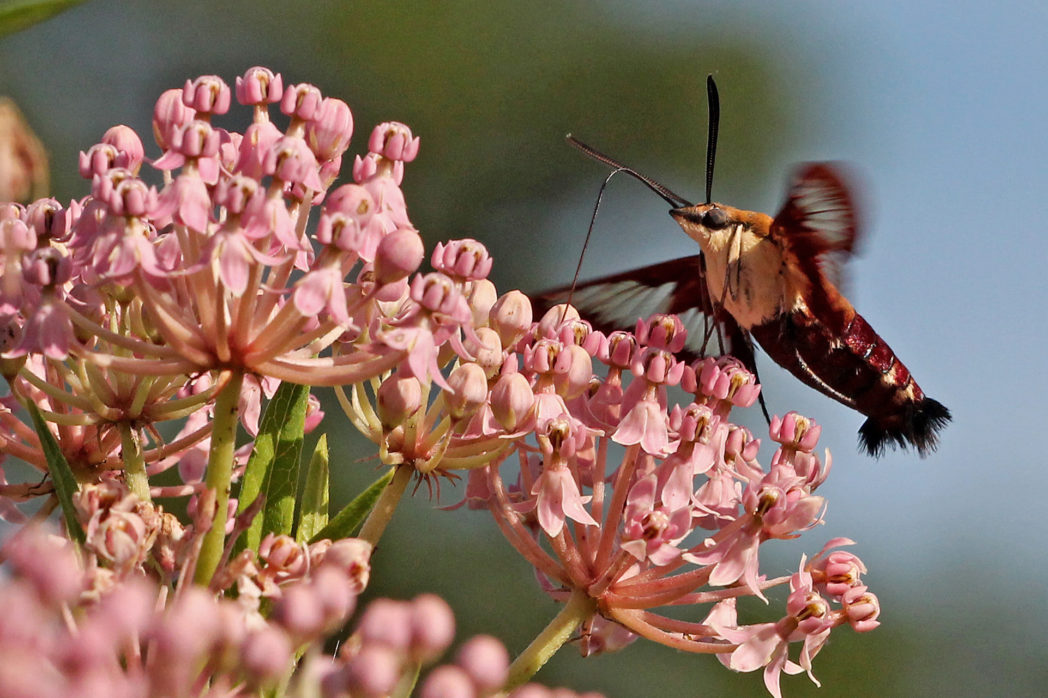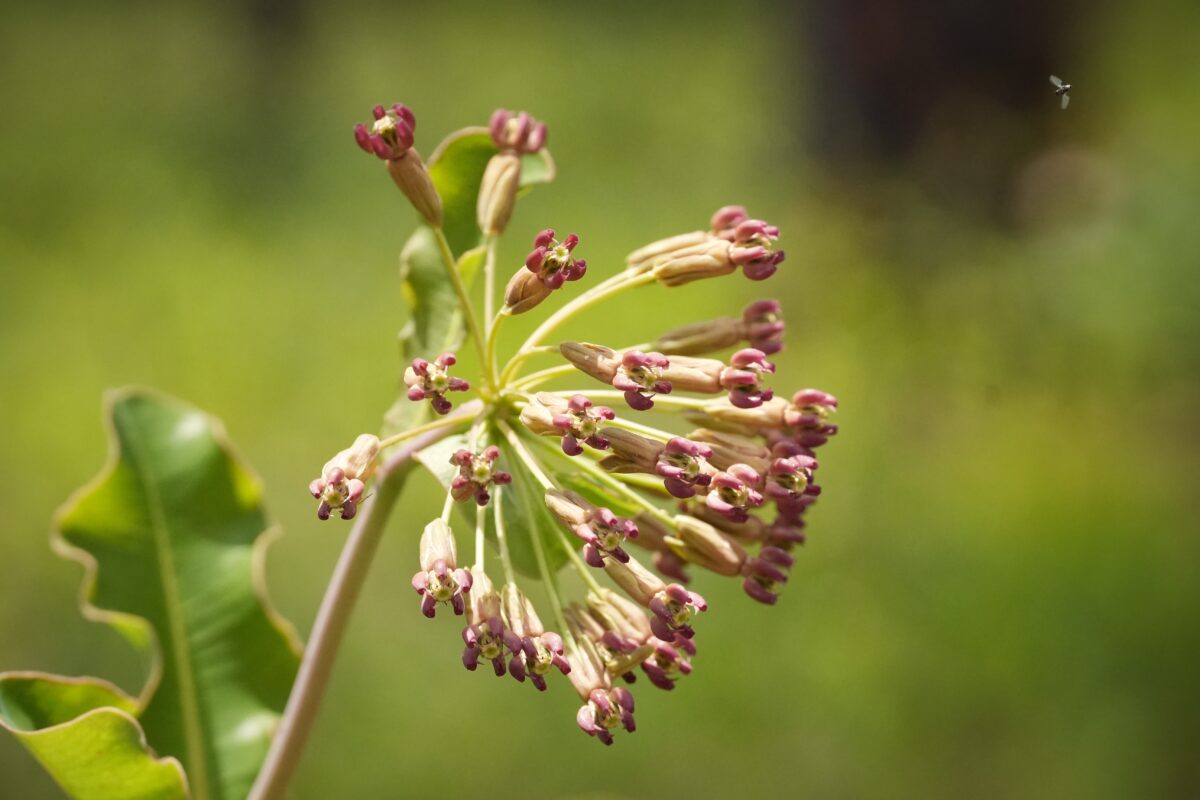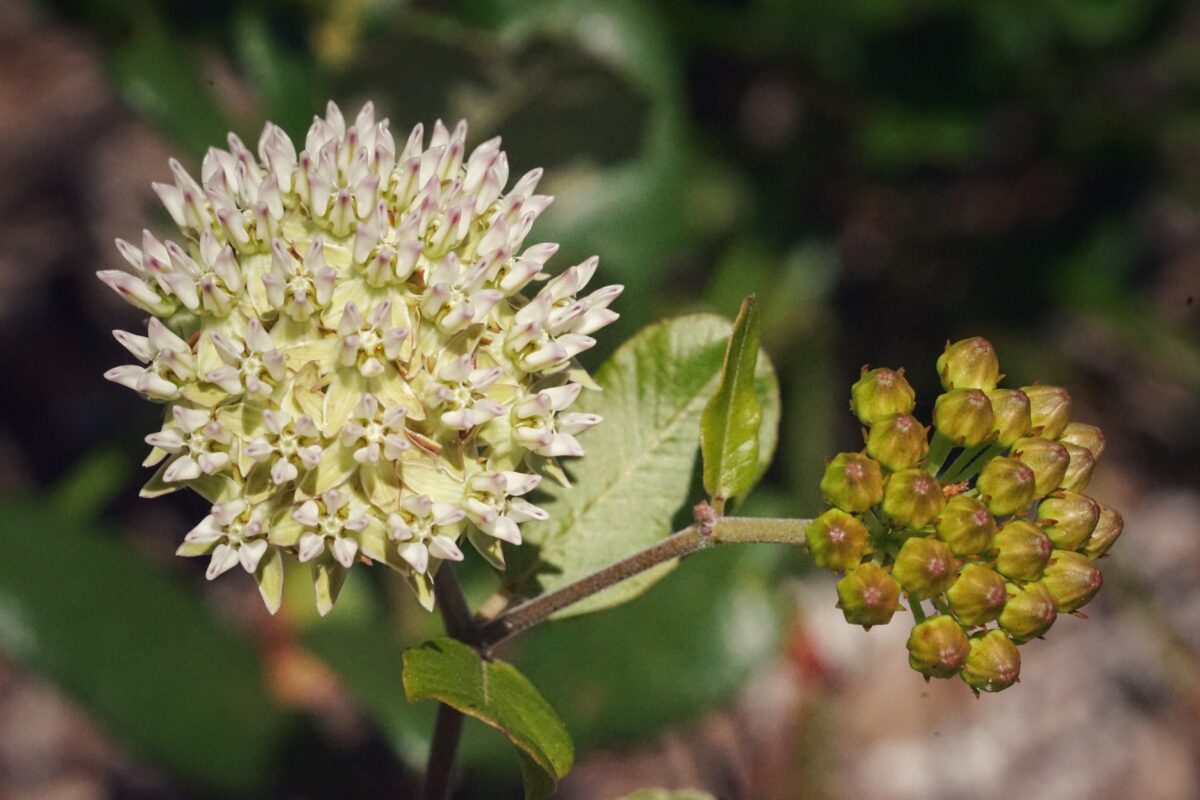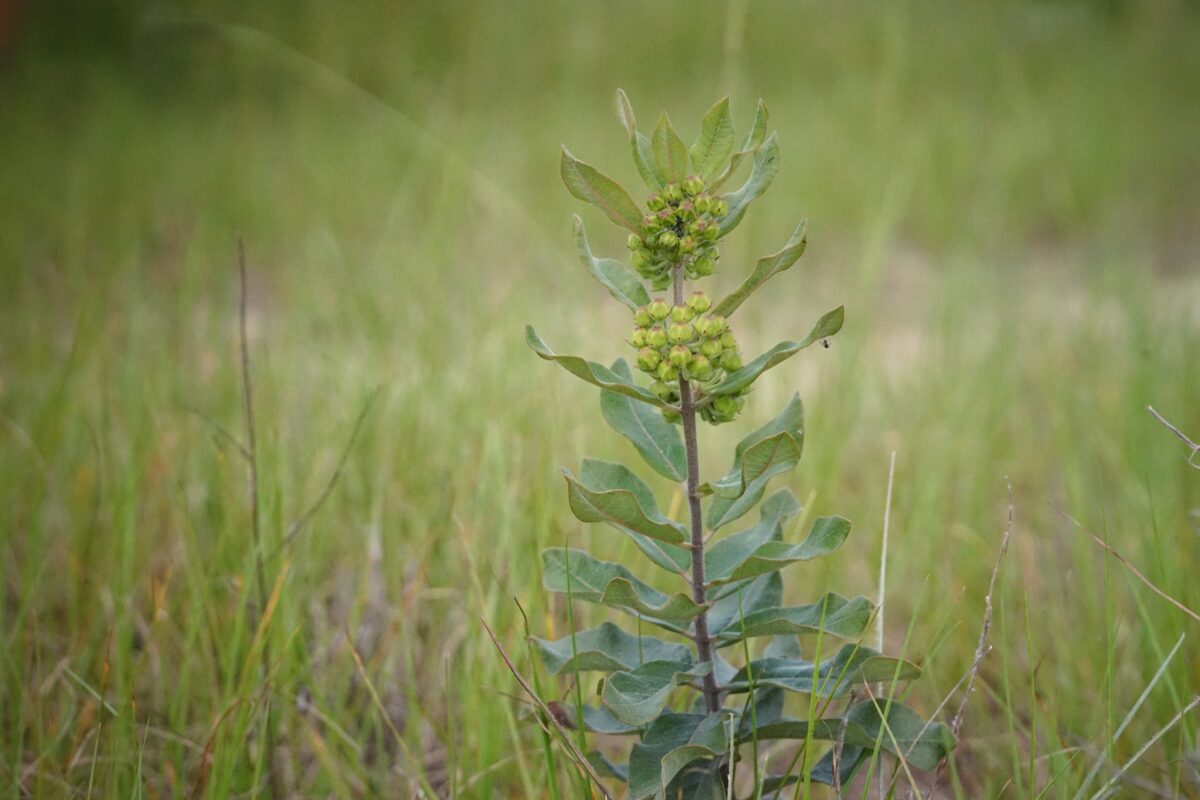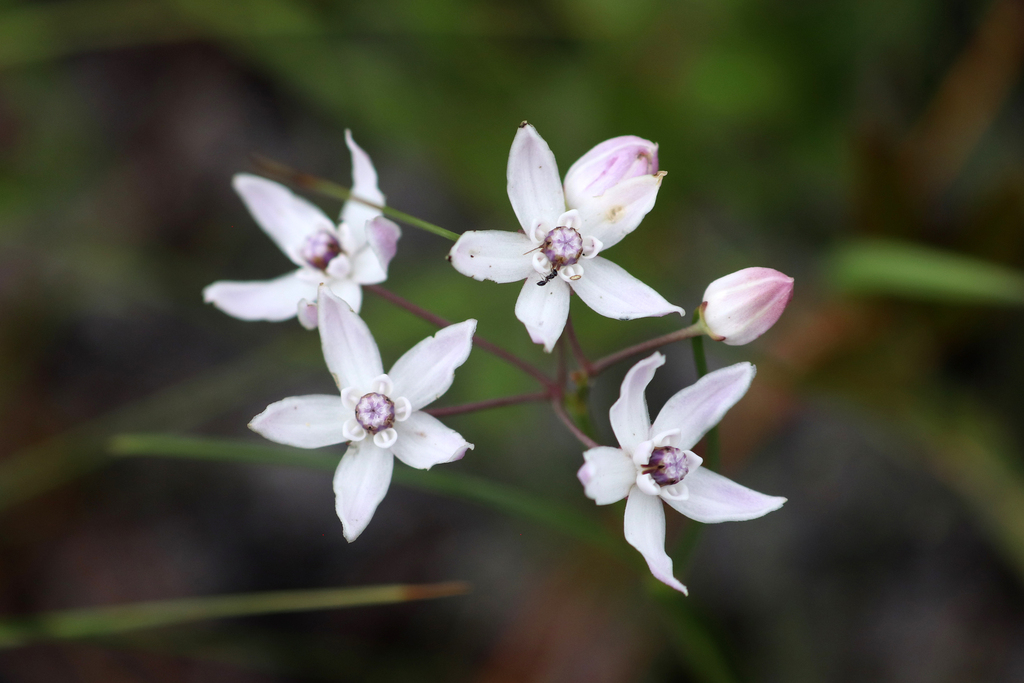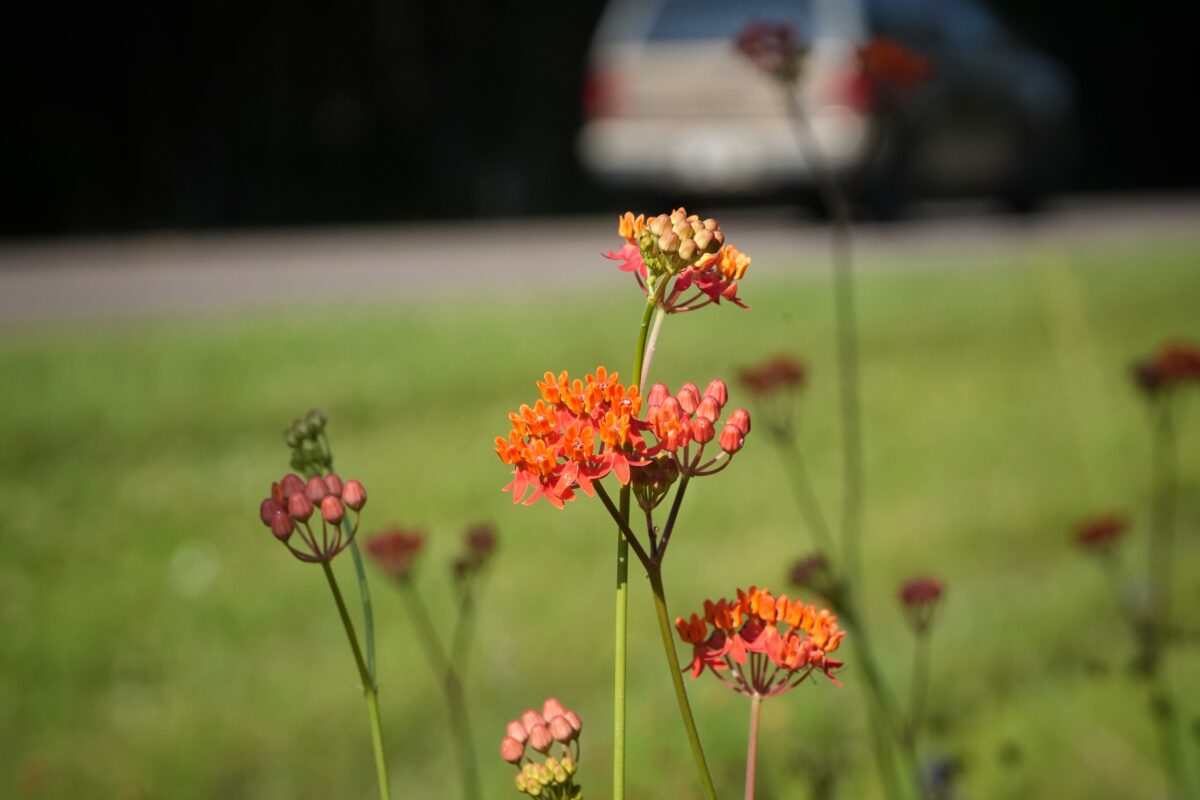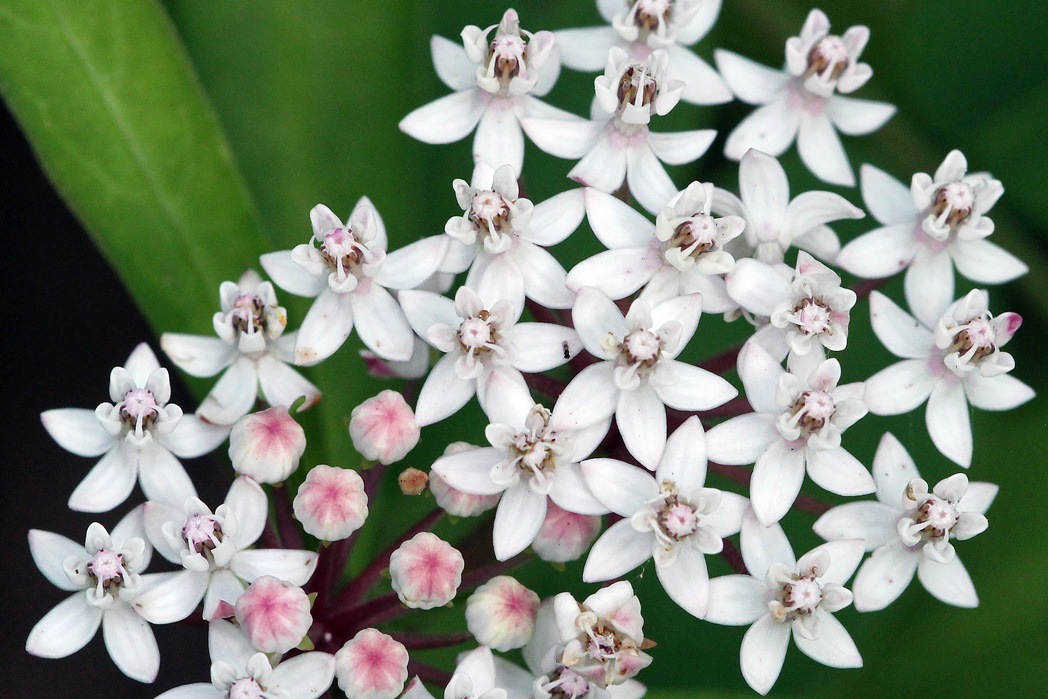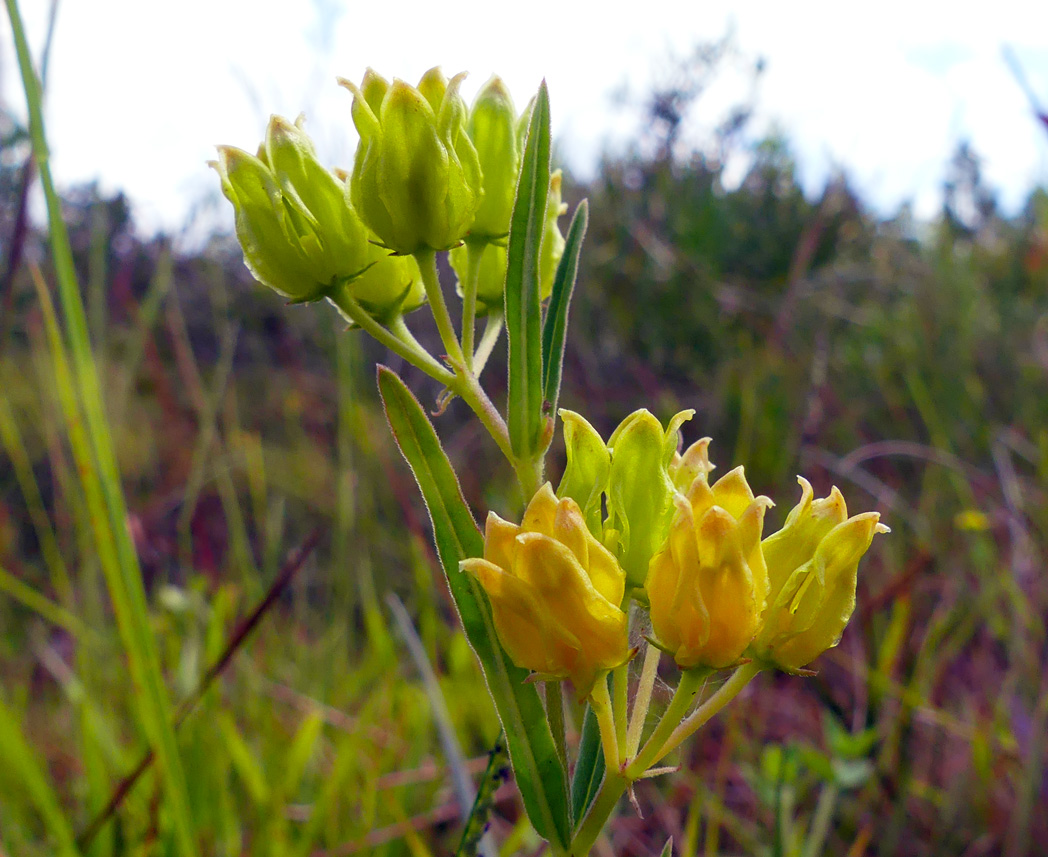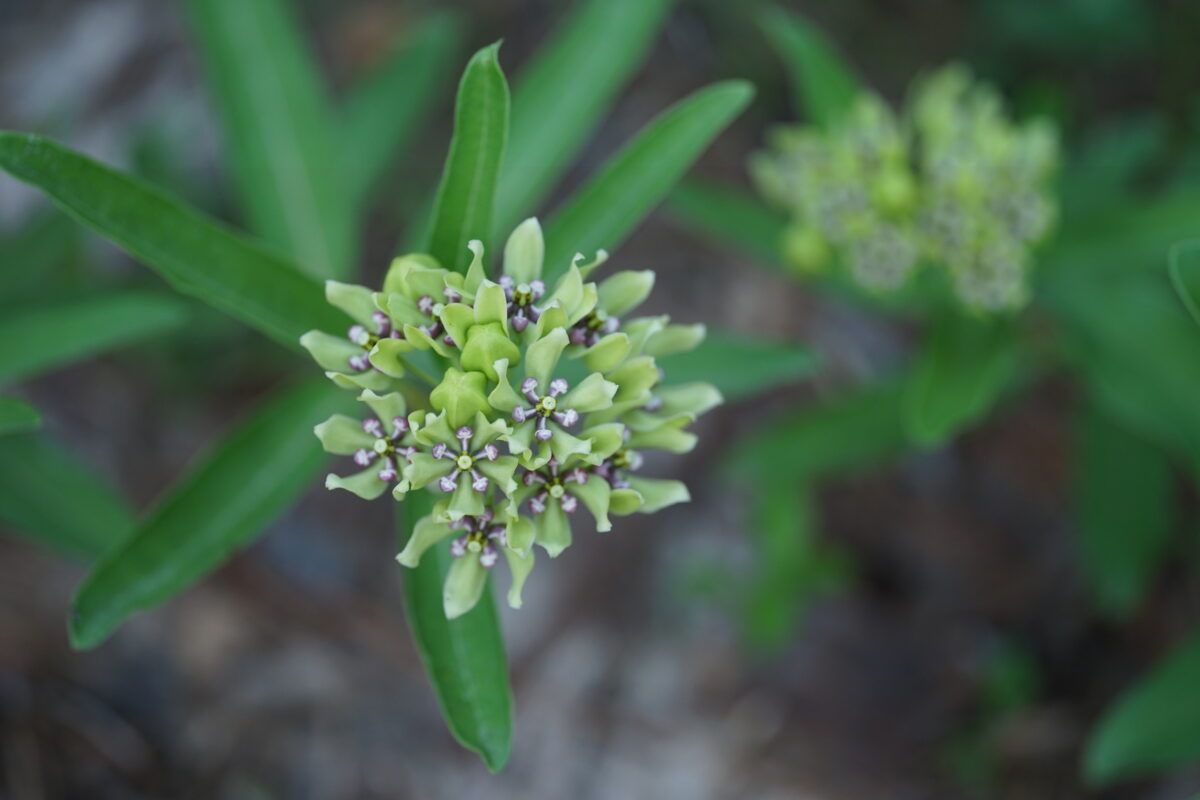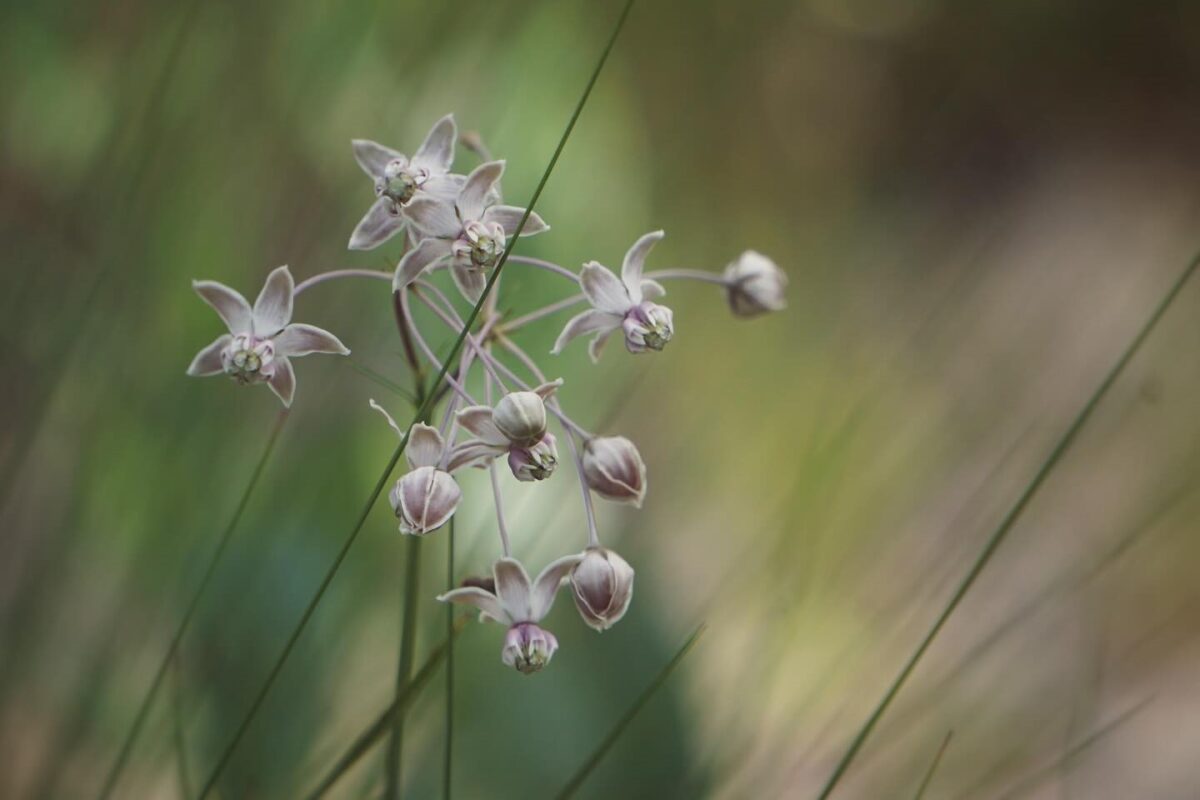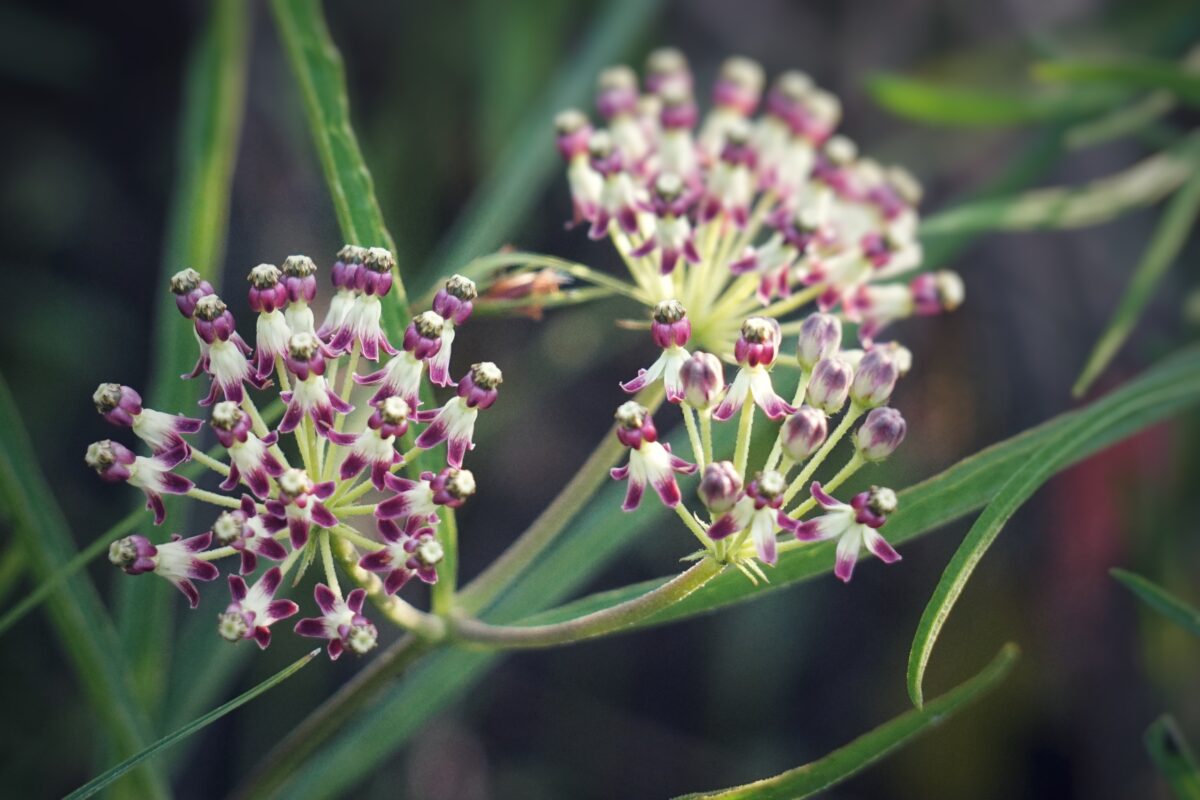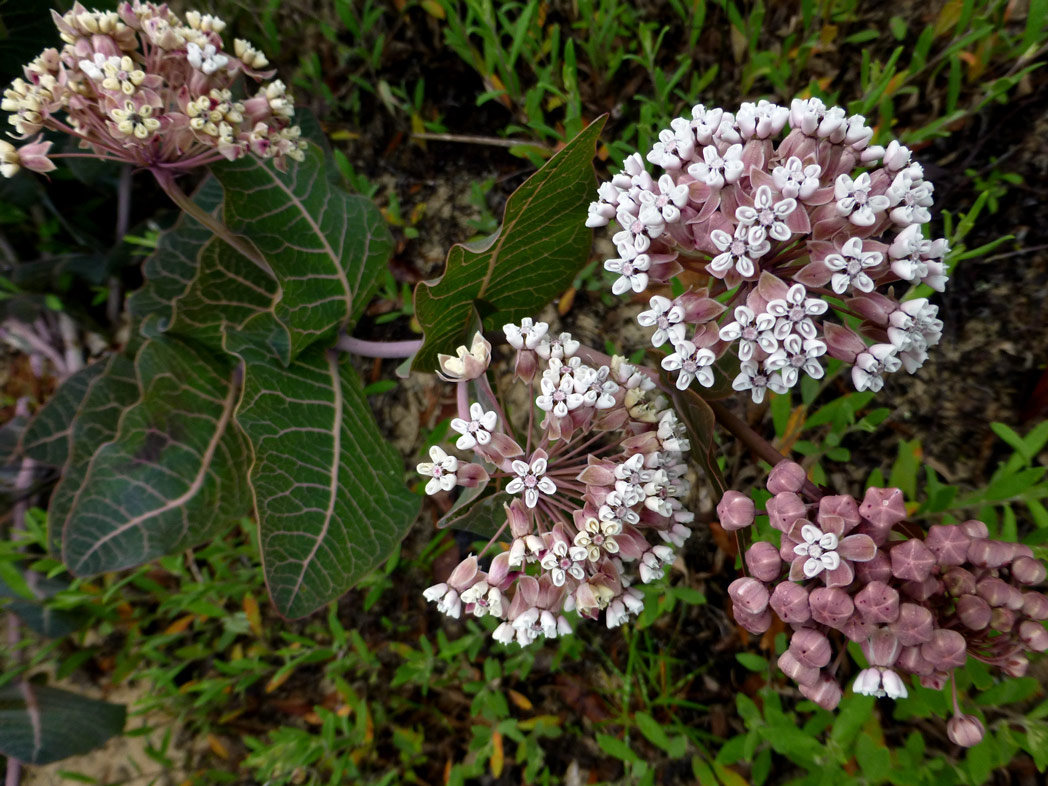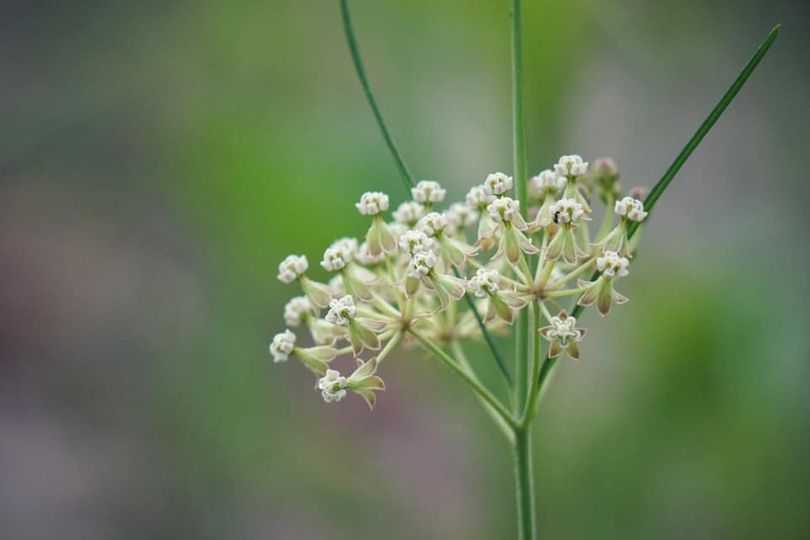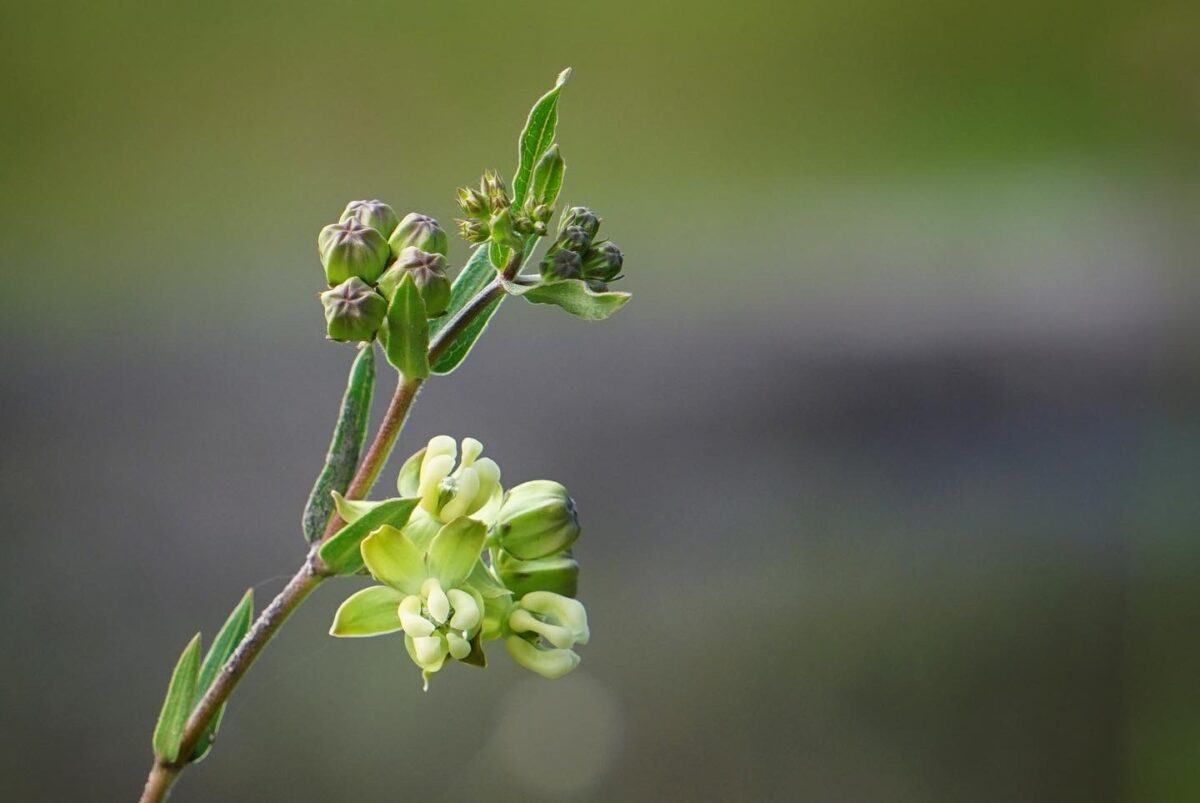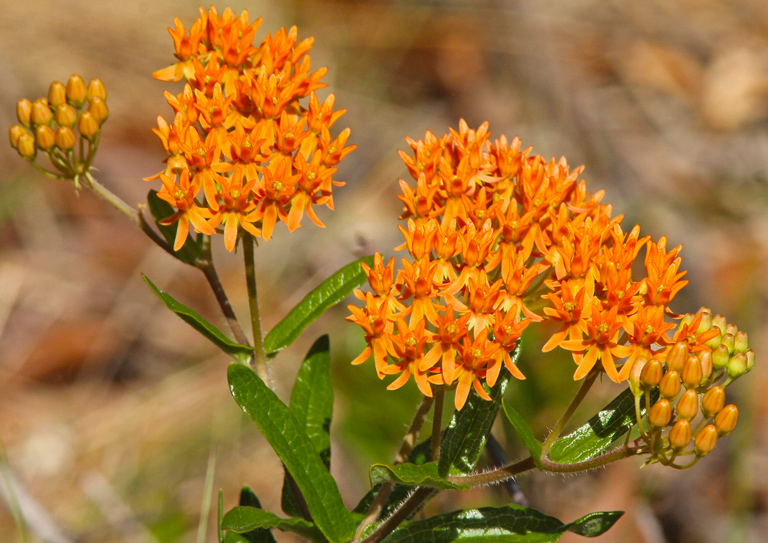Swamp milkweed
Pictured above: Hummingbird clearwing (Hemaris thysbe) on Swamp milkweed (Asclepias incarnata). Photo by Mary Keim. Click on terms for botanical definitions. View post as a PDF.
Sometimes known as Pink milkweed, Swamp milkweed is an erect, herbaceous perennial with striking blooms that makes a great addition to a moist, sunny landscape. It occurs naturally in floodplain swamps, hydric hammocks, wet pine flatwoods and marshes, and typically blooms in summer.
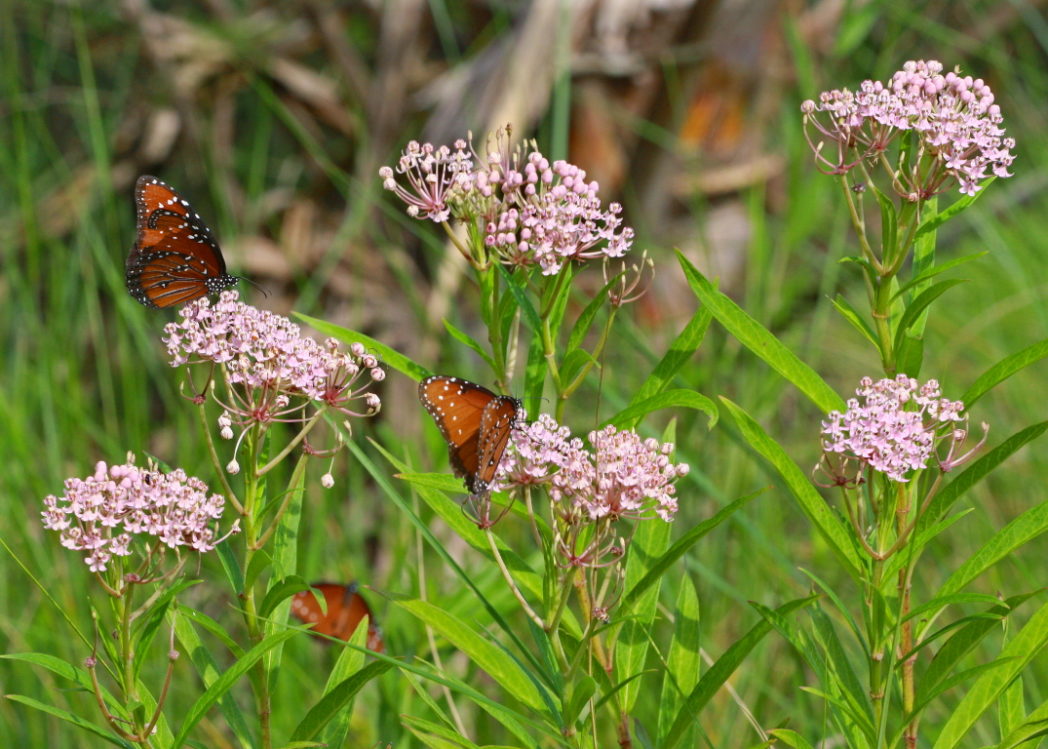
Swamp milkweed’s showy pink flowers are slightly fragrant. They are born in compact terminal or axillary umbels. Individual flowers have reflexed corollas and an upright corona — a characteristic typical of milkweed flowers. Leaves are long (up to 6 inches), elliptic to lanceolate, and glabrous. They are oppositely arranged. Stems are stout, glabrous and multi-branched. Seeds are flat and brown with silky white hairs attached. They are born in follicles that split open when ripe. Seeds are dispersed when their silky hairs catch the wind.
It is excellent for attracting butterflies and other pollinating insects. It is an important nectar source butterflies, including Pipevine, Spicebush, and Eastern swallowtails. Native sweat bees, leafcutter bees, and yellow-faced bees forage the flowers for pollen and nectar. Also, Like all members of the Asclepias genus, Swamp milkweed is a larval host plant for Monarch, Queen and Soldier butterflies. The plant contains a milky latex that is toxic to most animals, but Monarch, Queen and Soldier caterpillars are adapted to feed on them despite the chemical defense. Learn more about Monarchs and Milkweed in Florida here.
Family: Apocynaceae (Dogbane family)
Native range: Most peninsular counties, Wakulla and Leon counties
To see where natural populations of Swamp milkweed have been vouchered, visit www.florida.plantatlas.usf.edu.
Lifespan: Perennial
Soil: Moist to wet, well-drained soils
Exposure: Full sun to minimal shade
Growth habit: 4–6’+ tall, not as wide
Propagation: Collect seeds from plants once follicles split. Germinate on top of soil with a light mix barely covering seeds. Seeds can be stored in the refrigerator for a couple of months.
Florida regions of landscape suitability: North, Central, South
Garden tips: Swamp milkweed is one of our most striking native milkweeds. It does best in mixed butterfly and wildflower gardens planted in moist sunny landscapes, but can tolerate occasional drought once established. The plant does well in a container.
Caution: Do not confuse this plant with the nonnative Tropical milkweed (Asclepias curassavica), which is typically sold at retail garden centers. Tropical milkweed does not die back in winter in Florida (as do native milkweeds) and can encourage overwintering in adult Monarchs. It also is linked to the transmission of the Ophryocystis elektroscirrha (OE) infection.
Swamp milkweed is available from nurseries specializing in Florida native plants. Visit www.PlantRealFlorida.org to find a grower in your area.
Learn more about Swamp milkweed from the Florida Native Plant Society and the Institute for Regional Conservation
For information on other Asclepias species, see these resources:

